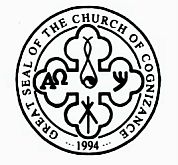4. Three Riddles. — Manifold are the problems suggested by the Eden-story (see EDEN; PARADISE). For instance, did the original story mention two trees, or only one, of which the fruit was taboo? bn iii. 3(cp. vv. 6, 11) only 'the tree in the midst of the garden' is spoken of, but in ii. 9 and iii. 22 two trees are referred to, the fruit of both of which would appear to be taboo. To this we must add that in ii. 17 'the tree of the knowledge of good and evil' appears to have the qualities of a 'tree of life,' except indeed to Adam. This passage seems to give us the key to the mystery. There was only one tree whose fruit was forbidden; it might be called either 'the tree of life' or 'the tree of knowledge,' but certainly not 'the tree of knowledge of good and evil.' *8 The words 'life' and 'knowledge' (= 'wisdom') are practically equivalent; perfect knowledge (so primitive man believed) would enable any being to escape death (an idea spiritualized in Prov. iii. 18).
Next, which of the trees is the 'tree of life'? Various sacred trees were known to the Semitic peoples, such as the fig-tree (cp. iii. 7), which sometimes appears, conventionalized, as a sacred tree.*9 But clearly the tree referred to was more than a 'sacred tree'; it was a tree from whose fruit or juice, as culture advanced, some intoxicating drink was introduced. The Gaokerena of the Iranians *10 is exactly parallel. At the resurrection, those who drink of the life-giving juice of this plant will obtain 'perfect welfare,' including deathlessness. It is not, however, either from Iran or from India that the Hebrew tree of life is derived, but from Arabia and Babylonia, where date-wine (cp. Enoch xxiv. *4) is the earliest intoxicant. Of this drink it may well have been said in primitive times (cp. Rig Veda, ix. 90. 5, of Soma) that it 'cheers the heart of gods' (in the speech of the vine, Judg. ix. 13). Later writers spoke of a 'tree of mercy,' distilling the 'oil of life,' *11 i.e. the oil that heals, but 4 Esdr. ii. *12 (cp. viii. 53) speaks of the 'tree of life,' and Rev. xxii. 2 (virtually) of 'trees of life,' whose leaves have a healing virtue (cp. Ezek. xlvii. 12). The oil-tree should doubtless be grouped with the river of oil in later writings (see PARADISE). Originally it was enough that there should be one tree of life, i.e. that heightened and preserved vitality.
A third enigma — why no 'fountain of life'? The references to such a fountain in Proverbs (xiii. 14, &c.) prove that the idea was familiar,12 and in Rev. xxii. 1 we are told that the river of Paradise was a 'river of water of life' (see PARADISE). The serpent, too, in mythology is a regular symbol of water. Possibly the narrator, or redactor, desired to tone down the traces of mythology. Just as the Gathas (the ancient Zoroastrian hymns) omit Gaokerena, and the Hebrew prophets on the whole avoid mythological phrases, so this old Hebrew thinker prunes the primitive exuberance of the traditional myth.
